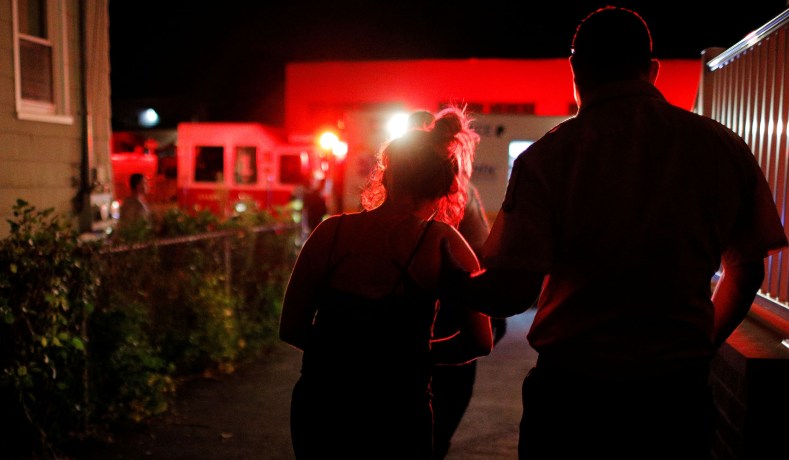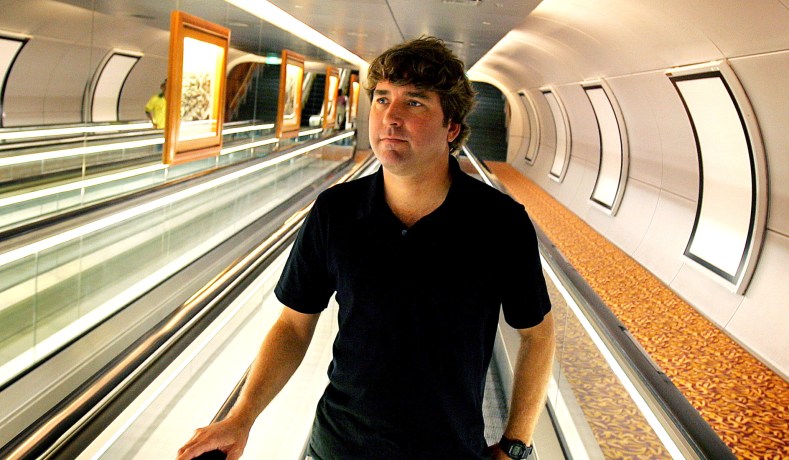

For three years in a row, Americans have been dying earlier than they did the year before.
The “American carnage” continues. For the third year in a row – a stretch not seen since World War I – American life expectancy fell in 2017, coming in at 78.6 years. The age-adjusted death rate, which takes into account our aging population, rose from 728.8 in 2016 to 731.9 in 2017.
This signifies more than just another month or two of life shaved off an expected lifespan of nearly eight decades. It shows the hollowness at the core of American life for too many individuals, and the need for a political and cultural prescription that puts meaning and belonging back in the foreground.
Because of the way life expectancy is calculated, changes in mortality at earlier ages have a bigger impact. Much of the decline was driven by an increase in deaths among people ages 25 to 44, especially from the opioid epidemic. And the overall rate of drug-overdose deaths rose 9.6 percent between 2016 and 2017. All told, 70,237 deaths were due to drug overdose in the U.S. last year.
There are even suggestions that this “carnage” may not be limited to American shores. Research recently published in The Lancet suggests the U.K. might be experiencing something similar: life expectancies that have reached a plateau, or worse, at least in some segments of society.
Academics in Britain found that communities in the bottom half of the country’s “Index of Deprivation” (an official measure based on an index of community and individual welfare) have seen increases in life expectancy basically stall out since 2011. In the two most “deprived” deciles, women’s life expectancy has declined by 0.25 years. Residents of those communities were more likely to have died from liver and lung cancers, diabetes, and suicide than residents elsewhere.
Across the U.K., deaths from the drug fentanyl rose by nearly 30 percent last year, and cocaine deaths rose to record highs (though the scale of drug deaths there is not anywhere near what it is in the U.S.). Parts of northern England see painkillers prescribed at rates four times higher than in London, leading to 10 million more opioid prescriptions filled in the country last year than were filled in 2007.
Both here and in the mother country, the unanswerable question is to what extent opioids are a technological change allowing the disconnected and desperate a more efficient way to disappear from the problems of the day, and to what extent they reveal a more fundamental shift in our social fabric. Put another way – is the opioid crisis more a symptom or a cause of our “miserable 21st century”?
Perhaps tighter controls on pill mills and gang activity might stem the damage. But a pessimist might argue that even if OxyContin had never been developed, “deaths of despair” might not be substantially lower, as people alienated from family, community, and work would find other ways of soothing the beast through less drastic, but hardly less poisonous, means. The empty feeling too many Americans feel would remain a gaping wound.
As the team at Senator Mike Lee’s Social Capital Project has pointed out, 68 percent of opioid-overdose victims have no more than a high school diploma, 71 percent of them are unmarried, and they are most likely to be between 25 and 39 years of age. In the latest CDC data, the suicide rate for the most rural counties was nearly twice the rate for the most urban ones. While everyone is at some risk of such a broad epidemic, it’s not a stretch to see the population most at risk for opioid abuse as being unattached and disconnected from prosperity and social networks of belonging and mutual reliance.
Even after the White House’s overdue declaration of a public-health emergency in October 2017, the opioid crisis remains an inconvenient reality of daily life in America outside the Acela corridor. It’s an uncomfortable story, one with countless victims and almost as many culprits — an industry, cozy with legislators, willing to turn a blind eye to abuse in pursuit of more market share, a medical profession willing to put profitable trends over evidence, a political class too insulated from small-town troubles to read the early warning signs, and, well, us as a polity.
Caught between one party that never saw a social problem it didn’t think a new government program could fix and another that could have heeded the warnings to make this a substantial part of its governing agenda but chose not to, our politics seems unwilling to adjust to this self-poisoning on a mass scale. Could we have forced one party or the other to care more about the underlying problems at the root of the epidemic? Did we try?
The ongoing intra-Right debate over Oren Cass’s new book is an illustration of this tension. One group of well-meaning conservatives believes that taking our eye off the economic-growth ball will lead to ever-more stagnation, while others (like Cass) believe we need to create an economy in which more individuals have the chance to be productive, even if that comes at the cost of some GDP growth.
Does more robust funding of, say, worker-training programs seem to be the ticket to address the kind of existential angst evidenced by the slide into opioid abuse? Should we expect the induced labor-supply growth from the Tax Cuts and Jobs Act to counteract the emptiness met by a bottle or pill jar? Is moralizing about civic society sufficient to rebuild a frayed social fabric that leaves too many isolated and alone?
Alone, none of these is sufficient, but the conversation Cass and others have started seems like a step toward responding to the challenge. Broadening our lens beyond economic growth to encourage caring for family, volunteering, or other non-remunerative but socially beneficial activities creates space for small spheres of being needed that can serve as the antidote to anomic suicide.
The worst-case scenario looks something like the human devastation wrought in mid-1990s Russia, and we’re not there yet. But this crisis will continue to, as the cliché goes, get worse until it gets better. Yes, we need to stanch the immediate bleeding, but we need to focus on saving the patient over the long term.
Doing so requires more creativity and less economic determinism, more willingness to question orthodoxies and less attention paid to the Twitter contretemps of the day, in favor of a politics that places creating space for small spheres of meaning at the forefront of any social agenda.
Patrick T. Brown is a graduate student at Princeton University’s Woodrow Wilson School of Public and International Affairs.



